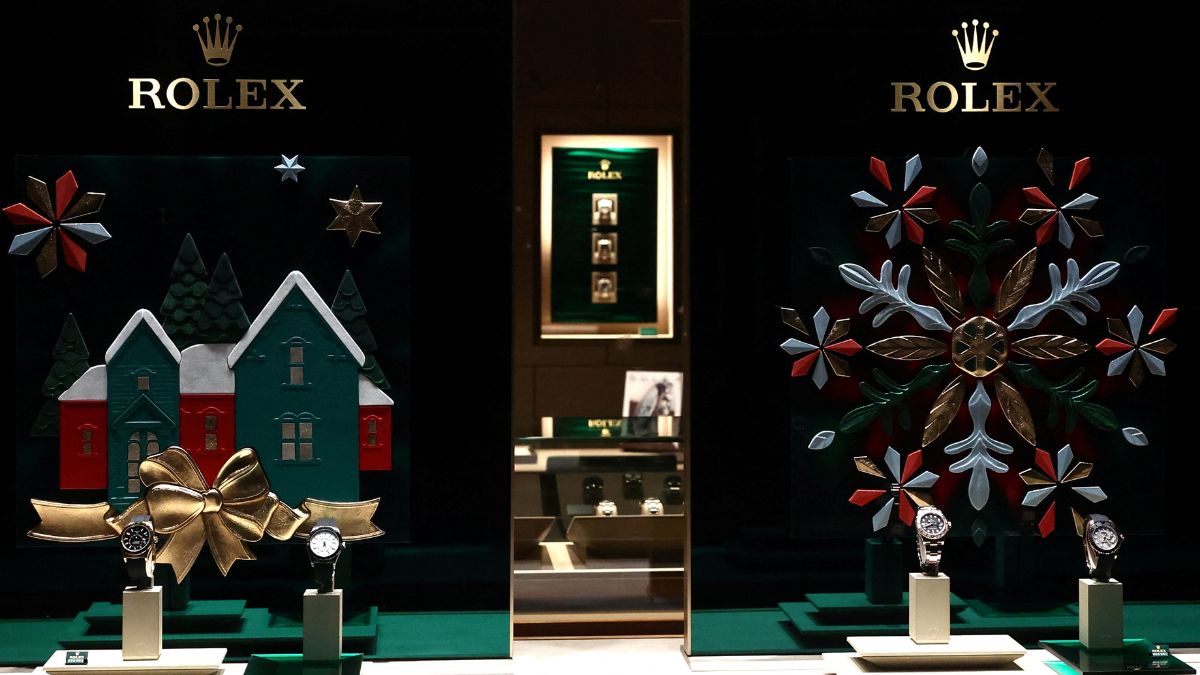Rolex, the world-renowned Swiss luxury watchmaker, has begun 2025 with notable price hikes across its range of gold timepieces.
These increases, reaching as high as 14 per cent for certain models, are closely tied to the soaring value of gold and other economic factors.
Known for their timeless designs and enduring craftsmanship, Rolex watches have long been a symbol of prestige. But with these latest adjustments, owning one has become an even greater investment — and challenge — for collectors and enthusiasts alike.
What is the key driver of Rolex’s price hikes
The dramatic rise in gold prices is the most significant factor behind Rolex’s latest price increases. Gold experienced a staggering 27 per cent surge in 2024, driven by global economic uncertainty, inflation fears, and significant purchases by central banks.
By year-end, gold reached a record high of $2,790 per ounce, and some analysts predict it could climb further to $3,000 in 2025, reported CNN. Rolex’s pricing strategy reflects this trend, with some of its most coveted gold models seeing substantial increases.
The Daytona in white gold with the OysterFlex bracelet now retails at $38,100, up from $35,000 the previous year, reported Fortune. Similarly, the yellow gold GMT-Master II has risen to $45,700 (€44,600), compared to $42,310 (€41,300) in 2024.
The Everose Day-Date 40 and Sky-Dweller models have also seen notable hikes. The Day-Date now costs $46,300, an 11.57 per cent increase, while the Sky-Dweller’s price rose by 9.26 per cent, reaching $57,800.
Even the Deepsea, known for its robust design and functionality, saw its price climb by over 11 per cent to $58,000. These figures underscore how rising gold prices have deeply influenced the luxury watch market.
What other factors may have influenced Rolex’s prices
Rolex’s annual price hikes are not merely a response to material costs. They align with a broader strategy that combines exclusivity, craftsmanship, and market positioning. Typically implemented on January 1, these increases are carefully calibrated to reflect not only inflation and labour costs but also the brand’s commitment to maintaining its image as the epitome of luxury.
Paul Altieri, CEO of Bob’s Watches, a leading pre-owned Rolex marketplace, highlights the role of rarity and craftsmanship in the brand’s pricing decisions. “The Rolex price increases aren’t just an economic reaction — it’s a recalibration of value in a world where craftsmanship and scarcity remain timeless currencies,” he told Robb Report. These principles ensure that Rolex watches remain highly sought-after, even in a volatile economic climate.
The price hikes also reflect regional economic conditions. For instance, Rolex has adjusted its prices in response to currency fluctuations.
In 2022, the company raised prices twice in the UK and Europe due to the strengthening Swiss franc against the euro and British pound. Such adjustments underscore the brand’s global approach to pricing and its sensitivity to local markets.
How steel fared against gold with Rolex
While Rolex’s gold models experienced the steepest increases, its steel watches — long considered entry points into the brand’s portfolio — saw more modest price adjustments.
For example, the Submariner without a date function rose by just 1.6 per cent to €9,500 ($10,200), and the steel Cosmograph Daytona increased by 3 per cent, reaching €16,000 ($17,200). This divergence highlights the varying impact of material costs on different segments of the luxury watch market.
The disparity between price hikes in gold and steel models reflects Rolex’s strategy to maintain accessibility for a broader range of buyers while capitalising on the premium associated with gold timepieces.
Steel watches remain popular among younger collectors and first-time buyers, while gold models cater to an audience seeking exclusivity and investment value.
What this means for buyers and investors
Despite the rising costs, demand for Rolex watches remains robust. Wealthy buyers, often insulated from economic fluctuations, continue to drive sales. Antonio Sasso, writing for Italian Watch Spotter observed, “Price increases not only do not lead to a significant loss of customers, they become a key strategy.”
Secondary market trends further illustrate this dynamic. Pre-owned Rolex watches often sell for 20 per cent above their retail prices, with some models fetching premiums of up to 50 per cent. The combination of scarcity and craftsmanship ensures that Rolex watches retain their value over time, making them attractive to both collectors and investors.
However, rising gold prices could prompt changes in the industry. Altieri speculated that manufacturers might explore alternative materials or recycled metals to mitigate costs. Others may double down on steel models to appeal to a broader audience, ensuring sustained interest in luxury watches.
For collectors and enthusiasts, these timepieces represent more than just accessories — they are symbols of enduring craftsmanship, exclusivity, and investment potential.
While the higher price tags may challenge accessibility, they also reinforce Rolex’s status as a timeless icon in the world of luxury.
Also Watch:
With inputs from agencies


)

)
)
)
)
)
)
)
)



